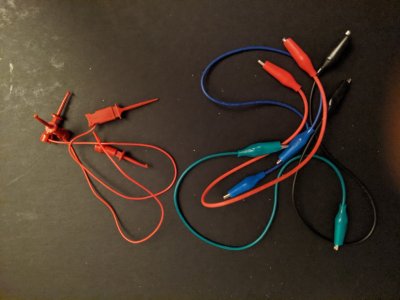O
Orange Tortex
Guest
This thread applies to several topics, so I’m putting it here. It’s also a copy+paste of my TGP post.
I finally got my Warmoth guitar assembled and strung, but now I’m facing a few problems.
One is with the truss rod. My neck is modern construction, which has a double truss rod with a heel and side adjust mechanism. Problem is, no matter how much I try to adjust the side screw, it doesn’t seem to change anything. I’m measuring with feeler gauges and the strings never get closer nor farther.
Second is the pickup height. They’re wood mounted humbuckers that I’ve modified to be adjustable by sticking foam to the baseplates. But even at their maximum height, they are still very far from the strings. With the E string fretted at the last fret, it measures about a quarter of an inch on the neck pickup and even further on the bridge. My theorized solution is to cut wood to fit the cavities and glue them into the body, then screw the pickups into them. Could that work or is the current height generally acceptable? It’s a Strat, so there is no downward angle of the strings like on a Les Paul.
Third is the wiring. Before this project, I’ve never soldered anything. And as it turns out, I wired the switch backwards, and the middle position does not work at all. I can’t physically turn the switch around because the wires are too short, so I’ll have to redo it. The switch shown on my diagram is different from mine as the lugs are mirrored, so I simply inverted it accordingly. As for the middle position not working, I can only imagine I wired something incorrectly, because for some reason my multimeter will not give me a reading no matter what method I use to test.
Lastly, the noise. The pickups work individually, but they are both super noisy. They buzz like a single coil would, even with low gain and volume. Could this also be a wiring issue? I’m not surrounded by a surplus of electromagnetic energy so I’m guessing shielding probably wouldn’t help?
I finally got my Warmoth guitar assembled and strung, but now I’m facing a few problems.
One is with the truss rod. My neck is modern construction, which has a double truss rod with a heel and side adjust mechanism. Problem is, no matter how much I try to adjust the side screw, it doesn’t seem to change anything. I’m measuring with feeler gauges and the strings never get closer nor farther.
Second is the pickup height. They’re wood mounted humbuckers that I’ve modified to be adjustable by sticking foam to the baseplates. But even at their maximum height, they are still very far from the strings. With the E string fretted at the last fret, it measures about a quarter of an inch on the neck pickup and even further on the bridge. My theorized solution is to cut wood to fit the cavities and glue them into the body, then screw the pickups into them. Could that work or is the current height generally acceptable? It’s a Strat, so there is no downward angle of the strings like on a Les Paul.
Third is the wiring. Before this project, I’ve never soldered anything. And as it turns out, I wired the switch backwards, and the middle position does not work at all. I can’t physically turn the switch around because the wires are too short, so I’ll have to redo it. The switch shown on my diagram is different from mine as the lugs are mirrored, so I simply inverted it accordingly. As for the middle position not working, I can only imagine I wired something incorrectly, because for some reason my multimeter will not give me a reading no matter what method I use to test.
Lastly, the noise. The pickups work individually, but they are both super noisy. They buzz like a single coil would, even with low gain and volume. Could this also be a wiring issue? I’m not surrounded by a surplus of electromagnetic energy so I’m guessing shielding probably wouldn’t help?



